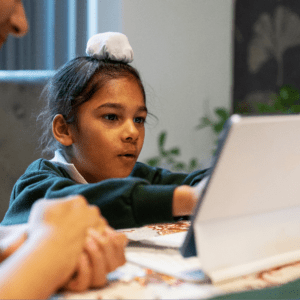We know that feedback from our students is an immensely valuable tool, but gathering quality feedback that truly reflects their learning experience can sometimes be a challenge. This article is here to help, offering simple and effective strategies to collect insightful student feedback.

1. Start with a Safe Space
Before we even start gathering feedback, we need to create an environment where students feel comfortable sharing their honest thoughts. Encourage open dialogue, make it clear that all opinions are valued, and assure them that their grades won’t be affected by their feedback.
2. Anonymous Online Surveys
One of the easiest and most effective ways to gather student feedback is through anonymous online surveys. Tools like Google Forms or SurveyMonkey are both free and user-friendly. Ask specific questions about your teaching methods, the course material, and the learning environment. The anonymity often encourages more honest and detailed responses.
3. Feedback Boxes
Consider setting up a physical feedback box in your classroom or a virtual one online. This allows students to give feedback at any time, not just when you ask for it. Make sure it’s anonymous and regularly remind students that it’s there.
4. Exit Tickets
Exit tickets are a quick method to gauge understanding at the end of a lesson. Ask students to write down one thing they learnt and one question they still have. This can provide immediate feedback on the effectiveness of a particular lesson and highlight areas where further clarification is needed.
5. Student-Teacher Conferences
Consider setting up brief one-on-one meetings with students, giving them the opportunity to discuss their thoughts about the course directly. A face-to-face conversation may reveal insights that written feedback might not.
6. Classroom Polls
Classroom polls can be a fun and engaging way to gather student feedback. Use a free tool like Kahoot! or Poll Everywhere to ask questions about your teaching methods or course content, and get instant feedback.
7. Feedback from Group Work
Group work can be a goldmine of feedback. Observe how students approach tasks, the questions they ask, and the challenges they face. After the activity, ask students to reflect on what worked and what didn’t.
8. Peer Feedback
Peer feedback can provide valuable insights into student comprehension. Students can comment on each other’s understanding of the topic, giving you a different perspective on their learning.
9. Suggestion for Improvement
Rather than just asking what students liked or didn’t like about a lesson, ask them for suggestions on how to improve it. This encourages constructive feedback and empowers students to be part of the solution.
Remember, feedback is most useful when it’s timely, specific, and actionable. It’s also crucial to ‘close the loop’ by sharing how you plan to address any issues raised. This not only validates the students’ feedback but also demonstrates your commitment to improving their learning experience. So, get out there and let your students help you be the best teacher you can be!





